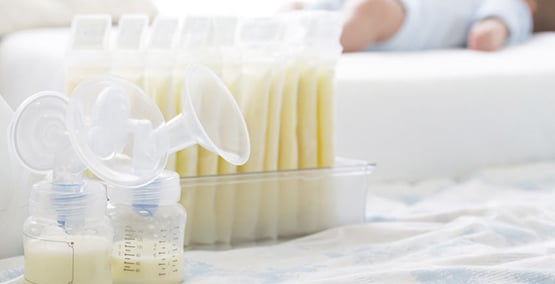
Storing breast milk safely
Breastmilk can be stored safely for days up to months. This is great news for breastfeeding mothers returning to the workplace or those who have excess milk production.

In the workplace, federal law requires that employers provide facilities where mothers can pump and store breast milk. If pumped at work, milk can be stored in a cooler and transferred to the fridge or freezer when you get home.
At home, breast milk can be pumped straight into a bag or bottle and stored in the refrigerator or freezer. Currently, there is debate on whether breast milk is best stored in plastic bags or bottles. While most experts prefer plastic bags, many milk banks use bottles for storage. Either option will work. What is important is that the milk if properly stirred so that the fat is evenly mixed. Also, make sure to date your milk and rotate your supply to use according to the dates.
Storage Guidelines for Breast Milk
| Location | Temperature | Duration | Comments |
| Countertop | Room temperature | 6–8 hours | Must be covered |
| Insulated cooler | 5–39°F or –15–4°C | 24 hours | Keep with ice packs |
| Refrigerator | 39°F or 4°C | 5 days | Keep at the back of fridge; use oldest first |
| Freezer compartment of refrigerator | 5°F or –15°C | 2 weeks | Store at back of freezer where temperature is more constant |
| Freezer compartment of refrigerator with separate doors | 0°F or –18°C | 3–6 months | |
| Deep freezer | –4°F or –20°C | 6–12 months |
Source: Bailey Koch, RD, CSP
Thawing Breastmilk
Proper thawing is just as important as proper storage. Microwaves can create hotspots with the milk, so MICROWAVES SHOULD NOT BE USED. Instead, breast milk should be thawed overnight. In the morning, place the container in a warm water bath until it reaches room temperature. Once the breast milk is thawed, it can be saved for up to 24 hours in the refrigerator. It should not be refrozen. To limit any waste, it might help to store the milk in 2 -4 oz portions.




